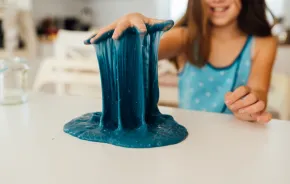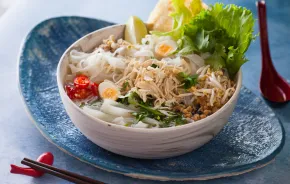 I've been growing vegetables with my children (now ages 8 and 18 months) since before the oldest could walk, and I've found there are a lot of rewards when you get your kids involved in the garden.
I've been growing vegetables with my children (now ages 8 and 18 months) since before the oldest could walk, and I've found there are a lot of rewards when you get your kids involved in the garden.
My daughter will eat her weight in raw sugar snap peas or red peppers in season, and my son can't get enough broccoli. All credit goes to the garden. We all want our kids to be diverse, healthy eaters, and when it comes to vegetables, studies show that if your kids can grow it, they are much more likely to eat it. That's good news, considering that no age group of U.S. children comes even close to eating the recommended daily servings of fruits and vegetables.
 In addition, spending time outside, as you regularly must to tend a garden, has been consistently shown to improve children's sleep, eyesight, stress levels, and performance in school. I see this with both my kids: Time in the garden spent running around, picking blueberries or tomatoes, herding chickens or pushing the wheelbarrow -- a task children universally love -- wears them out and calms them down. Too little outside time can lead to vitamin D deficiency, which puts kids at higher risk for asthma and, according to Science Daily, a vitamin D deficiency "can affect bone growth and density, metabolism, heart and immunity."
In addition, spending time outside, as you regularly must to tend a garden, has been consistently shown to improve children's sleep, eyesight, stress levels, and performance in school. I see this with both my kids: Time in the garden spent running around, picking blueberries or tomatoes, herding chickens or pushing the wheelbarrow -- a task children universally love -- wears them out and calms them down. Too little outside time can lead to vitamin D deficiency, which puts kids at higher risk for asthma and, according to Science Daily, a vitamin D deficiency "can affect bone growth and density, metabolism, heart and immunity."
This year is the perfect time to start gardening with your kids. Ensure that the experience is rewarding for everyone by introducing your children to vegetable gardening with no-fail varieties that are fun and easy to plant, fun and easy to harvest and -- best of all -- fun and easy to eat! The five vegetables that follow are big winners in all of these categories.
 Snap Peas
Snap Peas
Bush sugar snap peas such as Cascadia are easy to grow and need only moderate support compared to their tall-growing pole pea cousin. The big seeds are easy for little fingers to handle and the peas don't need to be shelled -- eat them whole, raw, cooked, or right out of the garden.
To grow: Give the peas a little support to adhere to. A standard tomato cage pushed into a prepared garden bed works well. Plant the peas about 2 inches apart and about an inch deep in a circle around the base of the tomato cage and keep moist. Peas will germinate in about two weeks, depending on the temperature of the soil.
In two to three months, you'll be harvesting sweet sugar snap peas right off the vine. The peas have the best flavor when the pods are quite fat and the peas have fully sized up inside but have not yet turned starchy. When it's time to harvest, teach kids to use one hand to steady the pea vine and the other to gently tug the pea pod up and away from the vine. Use the Superman phrase to help them remember: "Up, up and away!" This will help to ensure that the vine isn't ripped out of the soil when the peas are harvested.
Image Credit: Grow & Resist
 Cherry Tomatoes
Cherry Tomatoes
The vast majority of the garden's cherry tomatoes never make it to the kitchen, and that's just fine. These sweet, marble-sized tomatoes come in an array of colors usually reserved for sugar-coated breakfast cereal and are almost as appealing to kids.
The most popular cherry tomato is probably Sun Gold, a reliable, prolific ripener even when conditions aren't ideal. Sun Gold ripens to a dark orange, but white, orange, red, yellow, green, and even dark maroon (commonly called black) varieties of cherry tomato are also available.
To grow: Unless you are already accustomed to growing your own plant starts inside, you should plan on buying a tomato start from a good neighborhood nursery in April or May. Even if you do grow your own starts, it can be fun to take your kids to well-stocked nursery like Swansons, Molbak's or Sky and let them pick out their very own tomato plant.
At my local nursery, several dozen kinds of tomato plants are sold in the spring, and many have enchanting kid-friendly names like Sweetie, Chocolate Cherry, or Sweet Million. Do steer your kids towards cherry or grape-type tomatoes, as they tend to ripen early (an important consideration in short-season Seattle), are kid-sized at maturity, and are the best for out-of-hand snacking in the garden.
Transplant your tomato into rich garden soil when the soil is warm but the sky is overcast (this will cut down on transplant shock). Tomato plants purchased at a nursery are usually safe to plant out in mid-May, but if you are willing to use season extension techniques like low-tunnel cloching, milk-jug cloching, or wall-o-water type accessories, most years tomatoes can be transplanted out in the second half of April. Around Puget Sound, you cannot give these heat lovers too much sun. All tomatoes benefit from staking or the support of a sturdy cage.
 Winter Squash and Pumpkins
Winter Squash and Pumpkins
Winter squashes, including pumpkins, don't have the same eat-right-in-the-garden value of snap peas or cherry tomatoes, but there is a magic to them that children are naturally drawn to. The leaves of a vining winter squash are huge to the eyes of a small child, and a husky color-changing pumpkin cries out for a scientific thumping as it grows.
To make pumpkins even more fun, if you carefully carve your child's name into the skin of a pumpkin while it is green and about the size of a softball, the scratch will scar over as the squash grows, creating a personalized pumpkin for your child in fall! The classic heirloom pie variety is Small Sugar Pumpkin, but other large-format winter squash varieties like Sweet Meat or Banana Pink Jumbo are tasty in the kitchen and fun to grow as well. If you have the space, you could grow an entire rainbow of winter squashes.
To grow: Plant three to five big, easy-to-hold seeds about 1-1/2 inches deep at the center of a hill of loose, rich soil. Early to mid-May is usually a safe time to sow pumpkin seeds outdoors. To make speedy germination of these heat lovers more likely in cool Northwest soils, I cover the soil after planting with clear plastic. This warms the soil and keeps it from becoming waterlogged with constant spring rains. Check for germination daily and remove the plastic as soon as the pumpkin sprout starts to show through the soil. Once the sprouts are up and growing, cut off all but the healthiest, strongest looking seedling at soil level. This kind of thinning is hard for new gardeners but is essential -- crowded plants don't make pumpkins. Give your pumpkins as much room as you've got in a warm, sunny part of the yard.
 Cucumbers
Cucumbers
Children who don't love cucumbers often love pickles, and pickle-haters will frequently devour fresh-from-the-vine cukes. For this reason, cucumbers give you two opportunities to convince your kids that gardening is great fun and leads to a delicious reward!
While most cucumber varieties are bred to be good for either fresh eating or pickling -- not both -- if you are short on space any slicing cucumber (the Marketmore cucumbers always do well for me) can be used when small to make quick refrigerator pickles. Just slice the cucumber into disks, toss with a bit of salt and apple cider vinegar, and allow the flavors to combine in the fridge for 30 minutes or up to several hours.
To grow: Cucumbers are in the same family as pumpkins and can be grown in the same way. They have moderately large seeds and can be direct-sown six to eight seeds to a fertile hill in late-May or early June. Thin to the three strongest looking seedlings. Cucumbers can also be trellised -- this is my preferred method -- which saves a lot of space and will give you straighter, cleaner cukes. Set up your support -- nylon trellis netting works well -- when you sow your cucumbers. Don't wait until they are up and growing. Sow one cucumber seed about 3/4-inch deep every six inches along the trellis. On hills or trellises, covering the soil with clear plastic as for pumpkins will speed up germination or allow you to start your seeds a week or two earlier.
 Potatoes
Potatoes
The best thing about growing potatoes with kids is the harvesting! Pulling Yukon Golds or Viking Purples out of the ground is exactly like hunting for buried treasure.
There are pirate stories just waiting to be invented when you harvest potatoes. You can grow potatoes from organic market spuds, but I don't recommend it. Potatoes sold at nurseries and through mail order companies are less likely to be infected with various soil diseases that will diminish your final yield. Potatoes like cool weather and generally do very well around Puget Sound.
To grow: While there are almost as many schemes to maximize potato yield as there are gardeners, growing potatoes can be kept quite simple. Drop some seed potatoes about 4" deep in moisture-retentive soil and hill up loose, fluffy compost around the plants a few times through the growing season. Hilling up gives the potato more space in which to grow tubers and keeps the forming tubers underground. (When exposed to sunlight, potatoes turn green, a sign that toxic compounds have formed and it should not be eaten.) If you are growing a short-season potato, like Yukon Gold, you can plant anytime between March and June and expect harvestable potatoes about three months after planting. You'll know the spuds are ready when the foliage dies down naturally.
Invite your kids to dig the area where the potatoes have been grown methodically, ideally with a garden fork. Use any potatoes that are stabbed or cut during harvest right away; others can be cured and kept for several months or more, depending on the variety. One important consideration when growing potatoes with children is the toxicity of the non-tuberous parts of the plant. The leaves, fruit stems, and sprouts of the potato plant are all toxic, and care must be taken to ensure children cannot eat parts of the potato they shouldn't. Be particularly careful to teach children not to eat the fruit, which looks much like a small tomato.
Growing vegetables with children can make both gardening and parenting more rewarding. Start with these easy-to-grow kid-pleasing vegetables to keep everyone happily involved in the garden!









